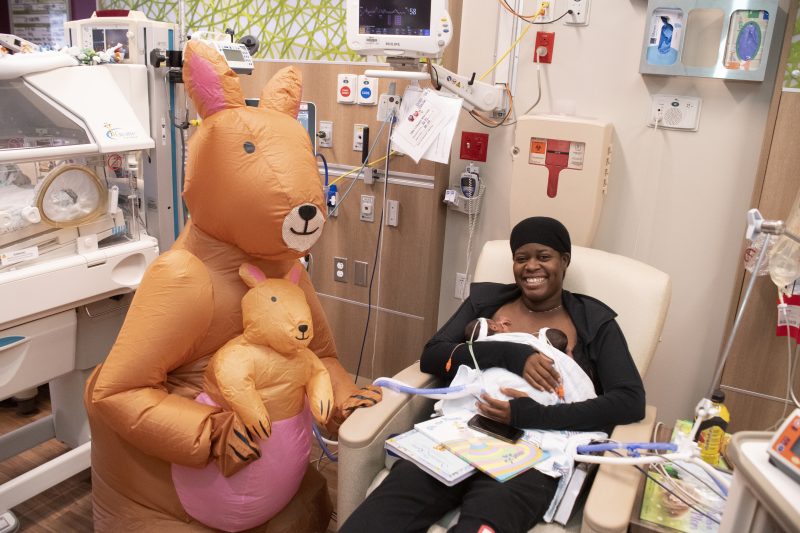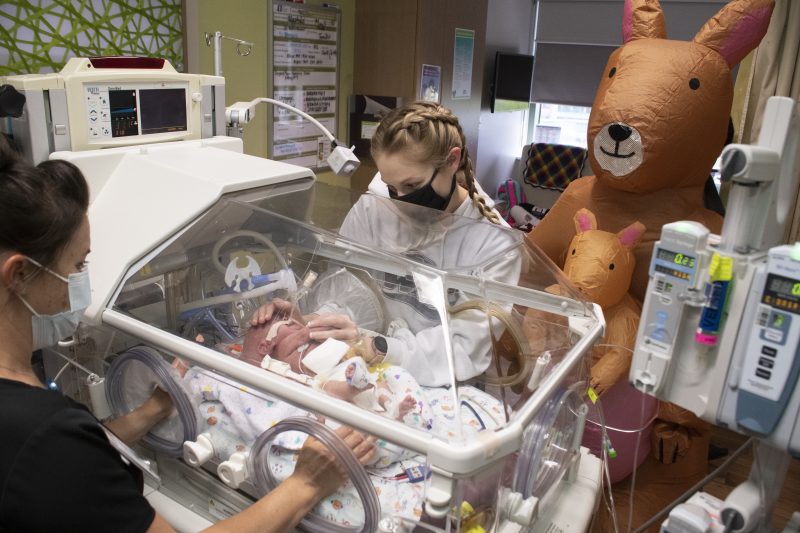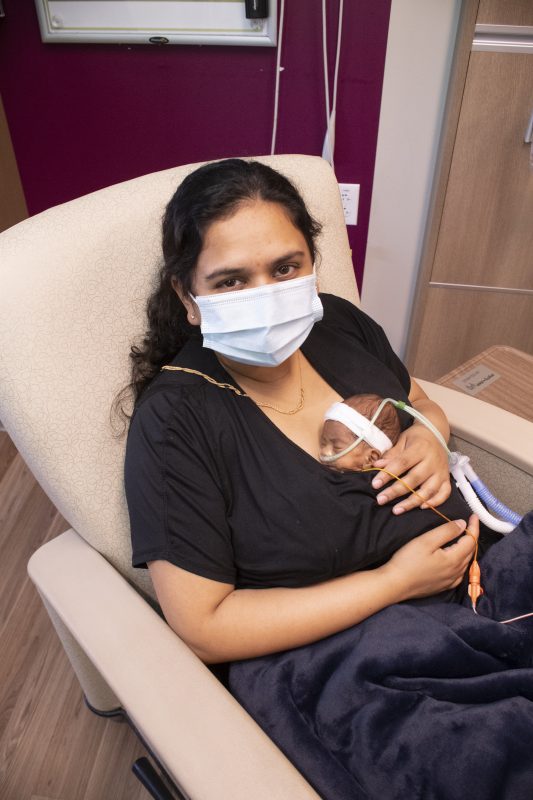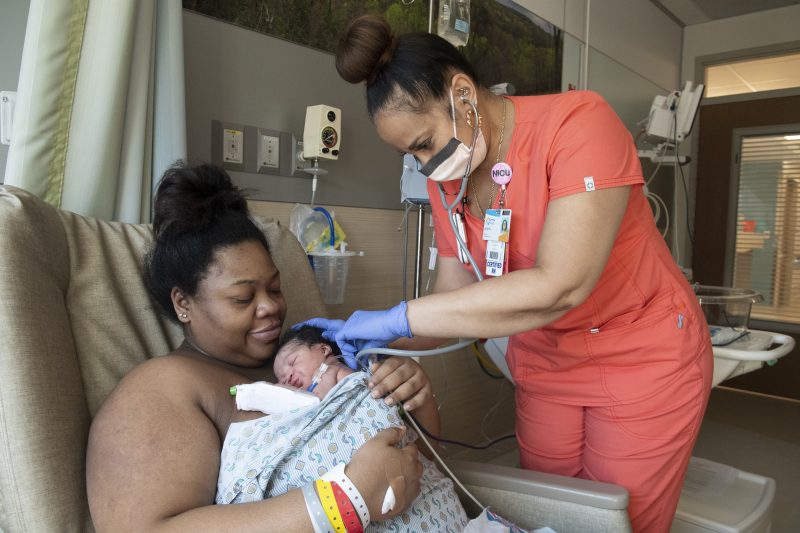
Akron Children’s nursing educators took the competition to the next level by purchasing a blow-up kangaroo costume and visiting families while they provided kangaroo care.
Akron Children’s has long been a proponent of kangaroo care, a practice used in our NICUs to promote healthy development and help parents feel more connected to their babies. When Pampers decided to do a contest in mid-May called a Kangaroo-a-thon to encourage extra kangaroo care in 4 NICUs across the country, Akron Children’s embraced the chance to participate and compete for a $5000 grant.
According to Marybeth Fry, NICU family care coordinator, “Kangaroo care has been practiced in our NICUs for decades because its benefits are proven for both parents and babies. It is performed by having family members remove their shirt and place the baby (wearing only a diaper) on their chest for skin-to-skin bonding. Each family received a securement garment to wear during kangaroo care, so the baby remained safe at all times.”
Babies often fall asleep during kangaroo care allowing the energy they conserve to be redirected by their tiny bodies toward growth and development. The practice originated in the late 70s in South American countries in response to high death rates of premature babies. Since then, research has proven there are many benefits to doing kangaroo care. For the baby these include things like regulated heart rate and body temperature, improved breathing and oxygen saturation levels, and decreased crying, stress and pain. For family members it improves bonding and increases confidence in caring for the baby.

For babies who were too critical to be kangarooed, families were encouraged to provide ‘hand hugs’ or therapeutic touch.
Marybeth had the full support of Pampers in helping her publicize and launch the kangaroo-a-thon.
“They provided us with a kit that included banners, kangaroo ears, badge holders, photo props, flyers and a tracking tool among other things to help get our families and staff pumped up for the event,” she said. “In addition, we sweetened the deal by offering a $20 Starbucks gift card to the nurse with the highest daily average of facilitating kangaroo care minutes.”
Pampers also offered some leeway for organizations to make the contest their own and encouraged creative ways to spark interest in the campaign.

Families were encouraged to log their kangaroo care minutes on a chart by placing stickers each time they performed skin-to-skin care.
“Our nursing educators purchased a blow-up kangaroo costume and visited families while they provided kangaroo care, making it even more fun for both staff and families,” Marybeth said.
Accommodations were made for babies who could not be held by using modified forms of kangaroo care.
“For babies who were too critical to be kangarooed, we encouraged families to provide ‘hand hugs’ or therapeutic touch,” Marybeth said. “This provides babies with gentle, firm pressure as well as containment similar to when they were in the womb.”
Families were asked to help track their kangaroo care minutes on a chart by placing stickers each time they performed skin-to-skin care. When all was said and done, 629 babies received over 1000 hours of kangaroo care from the 744 parents and nurses across the 4 hospital systems that participated.

Plans for the $5000 Pampers grant include further staff education about the benefits of kangaroo care and creating kangaroo care champions across the hospital’s 8 NICUs.
As a leading supplier of diapers to hospitals, Pampers often partners with NICUs to help support babies’ healthy development. Marybeth says the funds from the Pampers grant will go toward further educating staff about the benefits of kangaroo care and creating kangaroo care champions across the hospital’s 8 NICUs.
“We will be offering education in late summer to train our staff to become kangaroo-care champions,” she said. “This specialized training promotes the kangaroo care technique, benefits to family and baby and provides evidence that kangaroo care helps reduce the length of stay of NICU babies.”








